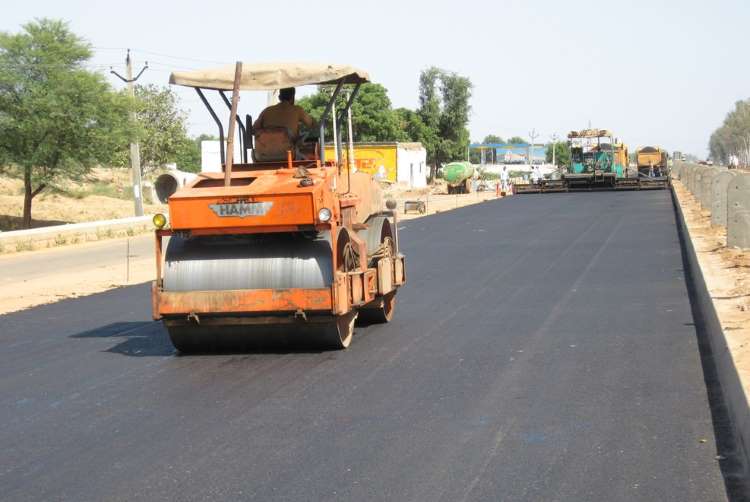
Infrastructure finance solutions for India: Infrastructure investments have a multiplier effect on economic growth and development. In India, public investment in infrastructure has more impact than other government interventions such as transfer payments and tax cuts. The Union government introduced the National Infrastructure Pipeline in 2020, outlining a six-year investment plan up to 2025. This was a big step, considering that previously there was no comprehensive public record of infrastructure investment plan by the Union and state governments, public sector undertakings, and the private sector.
The total infrastructure investment in 2022-23 was Rs 12.5 lakh crore, equivalent to 4.6% of the GDP. However, this is a notable decline from the over 7% investment during the 11th Plan period (2008-2012). The decline in infrastructure investment as a share of GDP highlights the need for an updated and transparent mechanism to track investments from various sources. The Planning Commission used to collect this data, and its absence has resulted in reliance on private agencies like CRISIL, which estimates the total infrastructure investment at 4.6% of the GDP.
READ I China plus One: Will India’s manufacturing gambit work?
Bridging infrastructure finance gap
The National Infrastructure Pipeline sets an ambitious target of $250 billion annually, but currently investments hover around $140 billion. To bridge this gap, several measures can be adopted.
Implementing reasonable user charges in public sectors such as education, health, and transportation can generate substantial resources. Many public utilities and services in India are significantly underpriced. For instance, Metro Rail services in major cities face operational losses partly due to frozen fares. Similarly, the losses in electricity distribution are substantial, with an average loss of 23 paise per unit supplied. Adjusting user charges to more sustainable levels can enhance revenue without significantly burdening consumers. In sectors like public education and health, user charges have remained static for years, hindering the financial viability of these essential services.
Leveraging existing infrastructure assets can mobilise significant resources. The World Economic Forum estimates that India’s brownfield assets are worth $16 trillion. Monetising even a fraction of this can support new infrastructure investments. For instance, the National Highway Authority of India (NHAI) has successfully utilised the toll-operate-transfer (TOT) model to monetise road assets, raising substantial funds that can be reinvested in new projects. However, the approach needs to be incentivised further. The funds garnered through such monetisation should be considered additional resources rather than substitutes for budgetary allocations, encouraging public sector entities to release their valuable assets for private investment.
Globally, pension funds and insurance companies are significant investors in infrastructure, but in India, their contribution remains minimal. Aligning infrastructure projects with environmental, social, and governance (ESG) norms can attract more institutional investment. Currently, infrastructure constitutes only about 2% of the portfolio of global pension funds. Canadian Pension Plan Investment Board (CPPIB), which has more than 5% of its portfolio in infrastructure, can serve as a model. To attract similar investments in India, projects need to comply with ESG standards, emphasising sustainability and ethical governance. This alignment can make infrastructure projects more attractive to international and domestic institutional investors looking for long-term, stable returns.
Addressing funding challenges
Several challenges need to be addressed to enhance infrastructure finance in India.
Sanctity of contracts is crucial for attracting private investment. The case of the Hyderabad Metro Rail project, where fare revisions violated initial agreements, underscores the need for contract enforcement. Private investors require assurance that their agreements will be honoured without arbitrary changes. Renegotiating contracts post-award can deter future investments, as it introduces uncertainty and risk. Ensuring the sanctity of contracts is fundamental for maintaining investor confidence and fostering a stable investment environment.
Stable and predictable regulatory frameworks are essential for infrastructure development. Decisions by infrastructure regulators should not increase regulatory risk or the cost of capital. Regulatory bodies must operate with transparency and consistency to prevent arbitrary changes that could impact the viability of long-term projects. Clear guidelines and stable policies will reduce the regulatory premium, lower the cost of capital, and make infrastructure projects more attractive to investors.
The government’s fiscal capacity to provide infrastructure finance is limited. The central government’s fiscal deficit and debt-to-GDP ratio highlight the need for increased private participation in infrastructure. While the government has committed substantial funds to infrastructure, its ability to continue doing so is constrained by fiscal realities. Therefore, attracting private investment through favourable policies and innovative financing mechanisms is crucial to sustaining and expanding infrastructure development.
Innovative financing mechanisms
Exploring new financing mechanisms is vital for addressing the infrastructure finance gap in India.
Value capture finance involves leveraging the increase in property values due to infrastructure projects like metro rails to finance further investments. As infrastructure projects enhance the value of surrounding properties, a portion of this incremental value can be captured to fund the projects. For instance, property taxes and betterment levies can be used to tap into the increased property values, creating a sustainable funding source for ongoing infrastructure development.
Infrastructure investment trusts (InvITs) have gained traction in India, particularly in the roads and power transmission sectors, raising around Rs 150,000 crore. InvITs allow investors to invest in income-generating infrastructure assets, providing a steady revenue stream and liquidity. This model has been successful in attracting both domestic and international investors, and expanding its application to other sectors can further enhance infrastructure financing.
Enhancing the credit rating of infrastructure projects can facilitate bond financing. Infrastructure projects typically have lower credit ratings (typically BBB) due to inherent risks and non-recourse financing, limiting their access to capital markets. Credit enhancement can improve these ratings, making infrastructure bonds more attractive to investors and expanding the pool of available capital.
The author is a former civil servant who currently serves as Member, Board of Advisors, Centre for Public Policy, Indian Institute of Management, Lucknow. He has authored a book recently, Infrastructure Financing in India – Trends, Challenges and Way Forward (Oxford University Press, 2024)
